To celebrate World bee day on the 20th May here are 25+ fun and simple activities that children and adults of all ages will enjoy. Did you know there are over 20,000 species of bee in the world, 90% of which are solitary bees! You may also be surprised to find that there are only 9 species of honey bee and 250 species of bumble bee in comparison to the thousands of species of solitary bee. If you look carefully you can often easily spot the differences between the main species and the Bumble Bee Conservation Trust have a brilliant visual guide to identifying bees here.

Honey bees and bumble bees live in social groups that consist of queen bees, drones and female worker bees. But solitary bees (as the name suggests) live solitary lives, foraging for food, mating and then laying larvae in singular nests that they find or make. They lay male larvae nearest to the entrance of the nest as the male bees will be first to emerge and go out to look for food, the male bees then wait for the females to emerge so they can mate and continue the cycle. Once the females have mated they will start important task of nest building so they can lay the next generation of larvae.
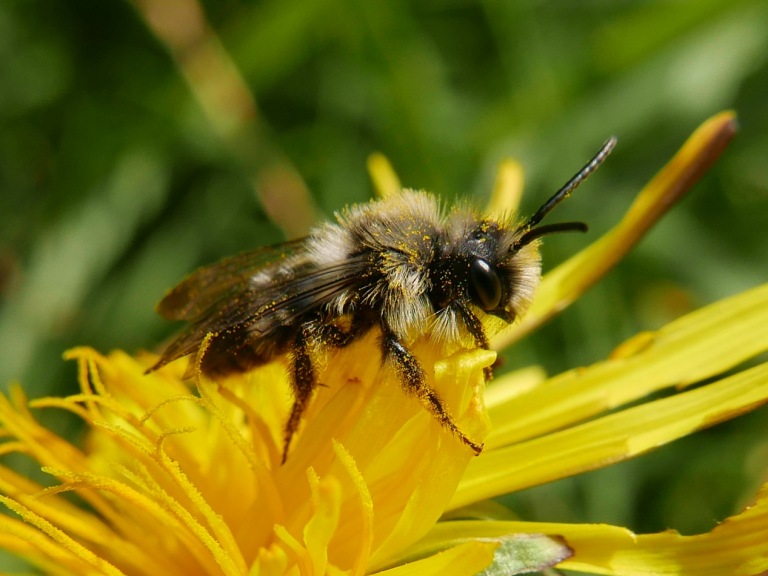
In the UK we have 270 different species of bee, 250 of which are solitary bees. Most of these nest in the ground by digging out nesting chambers (you can often spot the tell tale holes of solitary bee nest in soft embankments or the earth around fallen tree trunks). Some solitary bees like to nest higher up in ready made holes in trees. walls, buildings or made made insect houses. There are even types of solitary bee that like to nest in old snail shells and a variety that hollows out bramble stems to nest and overwinter in.

The vast majority of solitary bee nests consist of a series of chambers in a row with one larvae laid in each chamber along with pollen and nectar as a source of food. Each chamber is then sealed (to protect the larva) with a plug made out of either mud, leaves or resin.
All bees feed on pollen and nectar which they gather from flowers. In doing so they play a vital role in pollination as they carry particles of pollen from each plant and tree to the next. They also providing a important source of food for other wildlife like birds, insects, spiders and even mammals.
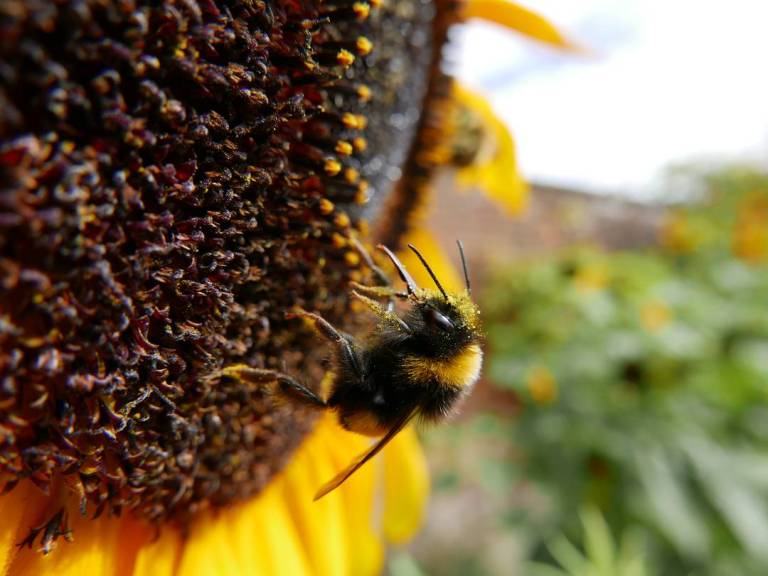
Female honey bees, bumble bees, orchard bees and stingless bees all have pollen baskets on their back legs in which they collect and transport pollen. Solitary bees also collect pollen however instead of a basket most solitary bees have special hairs (on the backs of their legs or abdomens) called scopa which they press the pollen firmly onto. You can often spot the tell, tell yellow and orange baskets or pockets of pollen on the legs of busy bees during flowering seasons.

Did you know that a third of the food we eat comes from plants that rely on pollination? Even medicines and materials like morphine, aspirin and cotton are derived from pollinated plants? Yet pollinator species across the world are in drastic decline due to widespread pesticide use and the loss of habitats.
This is why its so important to help pollinators like bees, butterflies, moths, hover flies and beetles by providing shelter, food and egg laying spaces for them. You can find out more about this below as well 15 other fun and interesting bee activities and ideas for children of all ages.
1. Create nesting sites for bees
Creating nesting sites for bees helps to give them safe and sheltered spaces to lay their larvae. Different species nest in different ways so creating a variety of shelters, hotels, homes and nest sites is more likely to help a variety of different species. You can easily buy specialized bee nesting boxes and houses but its is also cheap and easy to make your own using just found, recycled or natural materials.

If you don’t have the room or a garden (or don’t have a garden) for a big bee nesting site or insect shelter you could always make a mini one (in a cup, plant pot or box) to place in a window box or hang from a wall, tree or fence. Clusters of hollow bamboo canes, thin plastic tubing, bricks with holes in them and wood with natural or drilled holes are all brilliant materials to use to create nesting sites for solitary bees.

If you are drilling holes into bricks or wood (blocks, logs, posts or fences) to make nesting sites then don’t forget to drill a variety of different sized holes with different widths and depths. Different sized species will prefer different sized holes and tunnels for their nesting sites.
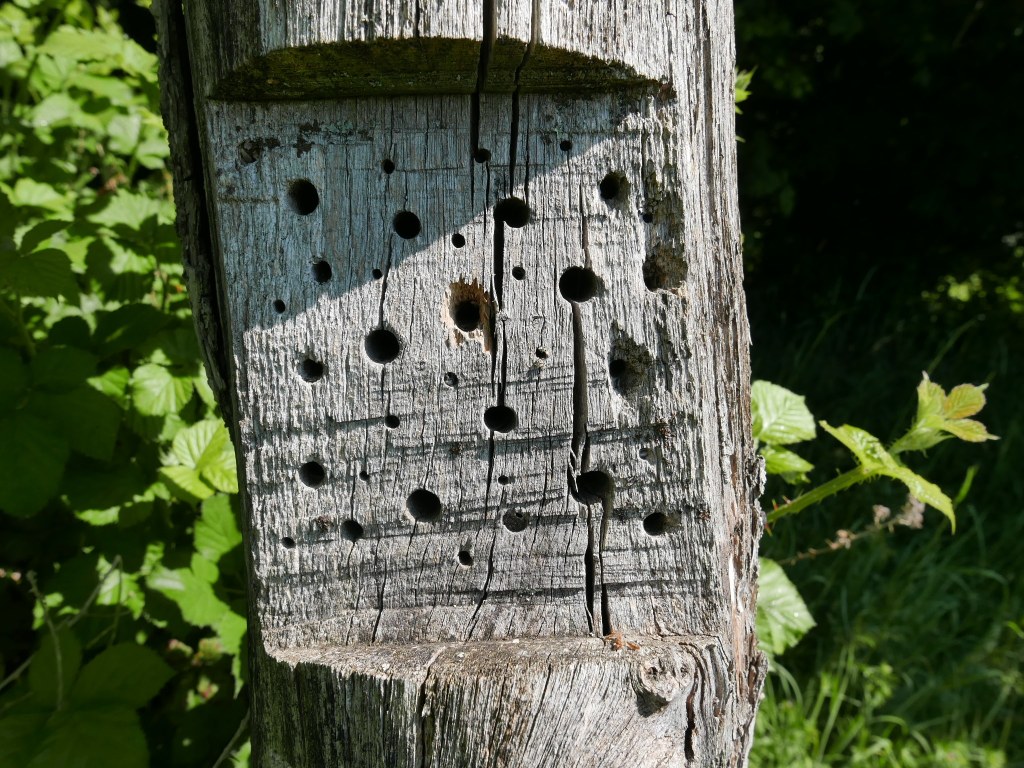
Bumbles prefer to nest underground and they often use old mouse or rodent burrows as their nesting sites. You can create a bumble bee nesting site using an old upturned flower pot dug into the ground at an angle, so the drainage hole at the bottom of the pot is tipped away from the rain. If you then place some hay or wood shavings in the pot it will smell more like an old mouse’s nest to the bumble bees encouraging them to nest.
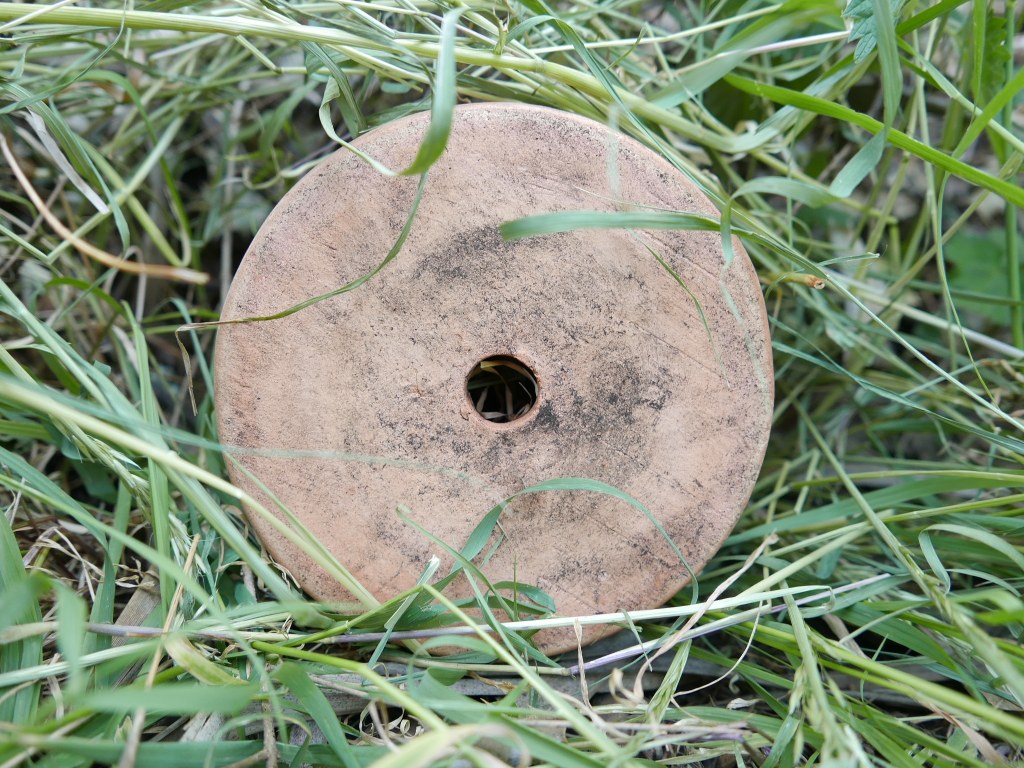
You can also make mining bee nesting sites using old plant pots and sand or soil. Mining bees dig or find holes in loose soil and sand in which to nest, First you will need to fill the base of the plant pot with stones to create an area for drainage. Next fill the pot with loose soil or sand and then compact it firmly down. Finally using a pen or stick poke holes into the soil or sand to create nesting sites for mining bees. Finally place a stone under the base to tip it slightly forward so rain is more likely to run off the surface than fill the holes.

2. Flying bees
Flying bees are so simple to make and great fun to play with. All you need to make these are some card, pens or paint, sting and a stick. Simple draw or a paint a bee shape onto the cardboard then cut it out. Poke the string through the middle to the bee and tie it underneath. Then tie the other end of the string securely to the stick. You can then have great fun flying the bee through the air, buzzing about and pretending to land it on flowers
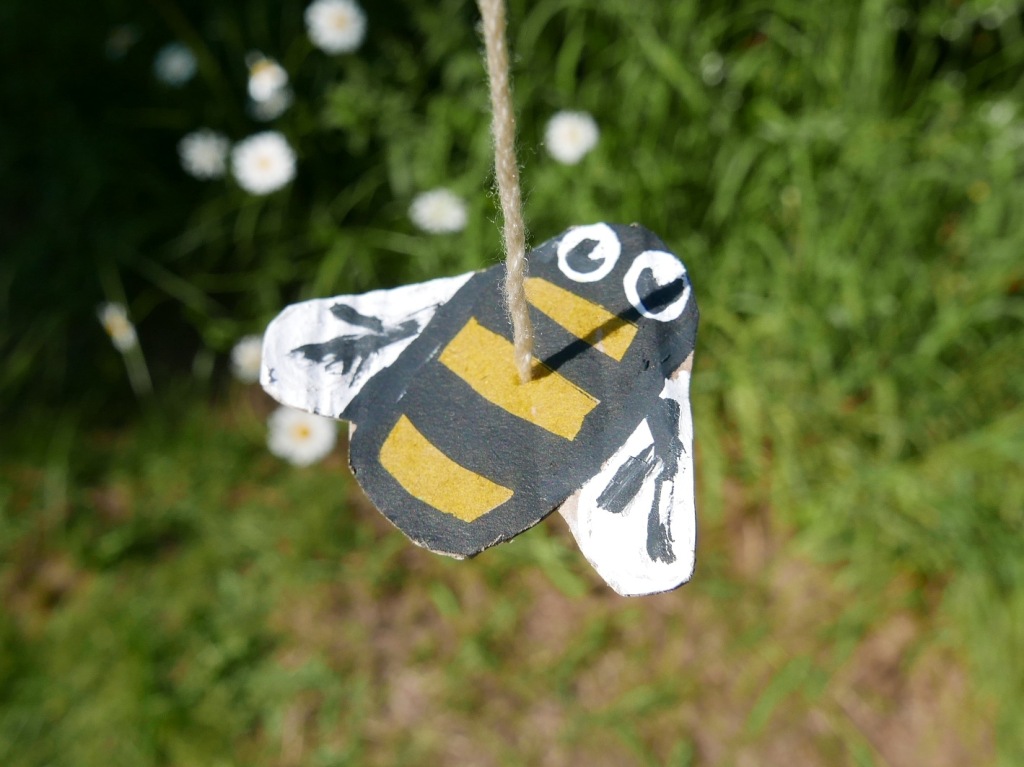
3. Play a pollination game
How about using your flying bees to play a simple pollination game. Most plants form seeds by growing flowers that attract pollinators, the flowers contain ovules (structures containing female reproductive cells) which need to be pollinated before they can then develop into the ‘fruits’ that contain seeds. All you need to play a simple pollination game is a large sheet of paper or cardboard, recycled milk bottle tops, glue and paint. First you need to paint a random scattering of flowers across the surface of your picture. A few of them need to be big enough to place the milk bottle tops in the centre.

Paint the smaller flowers with yellow centres and then glue a few milk bottle tops onto the larger flowers. Next glue a small scrunched up piece of tissue onto the bottom of your flying bee so it can pick up the pollen and transfer to the other flowers. Once the paint and glue has dried on the picture and bee you can then fill the milk bottles tops with orange paint to make your pollen.

Now you can have fun dipping the bottom of your bee into the ‘pollen’ paint and landing it on the other flowers to pollinate them. This is a great opportunity to talk to children about the important role bees and other pollinating insects play in the life cycle of plants and trees.
4. Learn how bees feed
Bees feed using a tube like mouth part called a proboscis which they use to suck up nectar from flowers. They can extend the proboscis like straw allowing them to reach down into flowers to gather nectar. You can easily demonstrate this using some cardboard tube flowers, clean bottle caps (milk bottle caps work really well) and a straw.

To make your flowers first cut a cardboard tube into 3 or 4 smaller segments, each segment will be a flower. Take one of the smaller tubes and cut evenly spaced slits into the top to create flaps. Fold each of the flaps over to form the petals, you can leave them rectangular or cut the edges to make them rounded. Finally add colour to your cardboard tube flowers using paint, pens or collaged materials.

Next place the clean bottle caps into the bottom of the cardboard tube flowers and fill them with water or a sweet drink. Then try to drink the liquid without moving or touching the flowers with your hands or mouths. If should be impossible as your mouth can’t fit into the flowers to reach the liquid in the bottle caps. Now try drinking the liquid using a straw, the straw makes it easy and simple to reach into the flower to drink the liquid.
5. Learn how honey is made
Honey bees turn the nectar they collect into honey to store in their hives as a source of food. The Nectar the flowers produce is over 70% water and contains a mix of different sugars like sucrose, glucose and fructose. The nectar also contains sweet smelling chemicals that help draw the bees and other pollinating insects to the flowers. The bees suck up the nectar using their proboscises and store it in a second stomach where special enzymes some of the sugar down and raise the acidity of the nectar to kill bacteria. When the stomach is full the bees carry the nectar back to the hive. Once they return to the hive they regurgitate the honey and pass it between the other bees going from mouth to mouth as they chew and reduce the water content of the nectar down to 18 percent so it becomes mold and bacteria resistant. They then store the honey in wax cells known as honeycomb. All the honey we eat is made by bees and it takes 12 bees their entire lifetimes to make one teaspoon of honey.
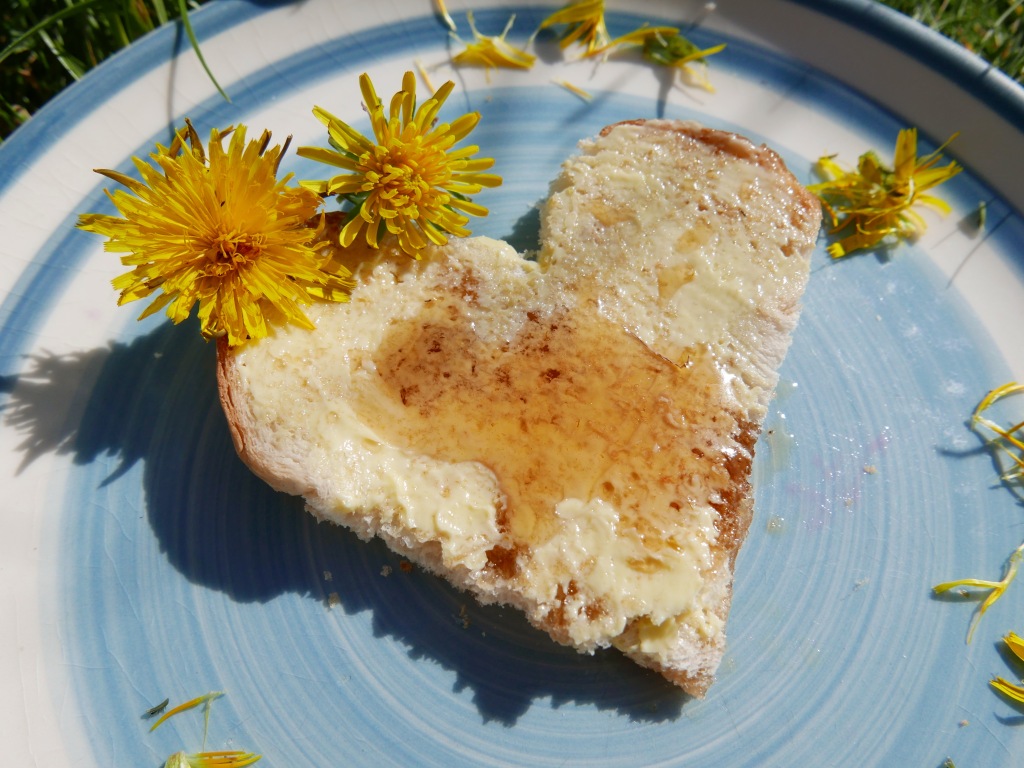
6. Learn about bees wax
Beeswax is a natural wax produced by honeybees to form the walls and cells of a hive. It’s also been used throughout history for waterproofing, lubrication, sealant, polish, candles, casting, cosmetics and even in teeth fillings. Beeswax is produced by special glands on the bodies of female honey bees that convert the sugar from honey into beeswax that oozes through pores to form wax scales. The bees then chew the wax scales to turn them into the beeswax that forms the cells of honeycomb
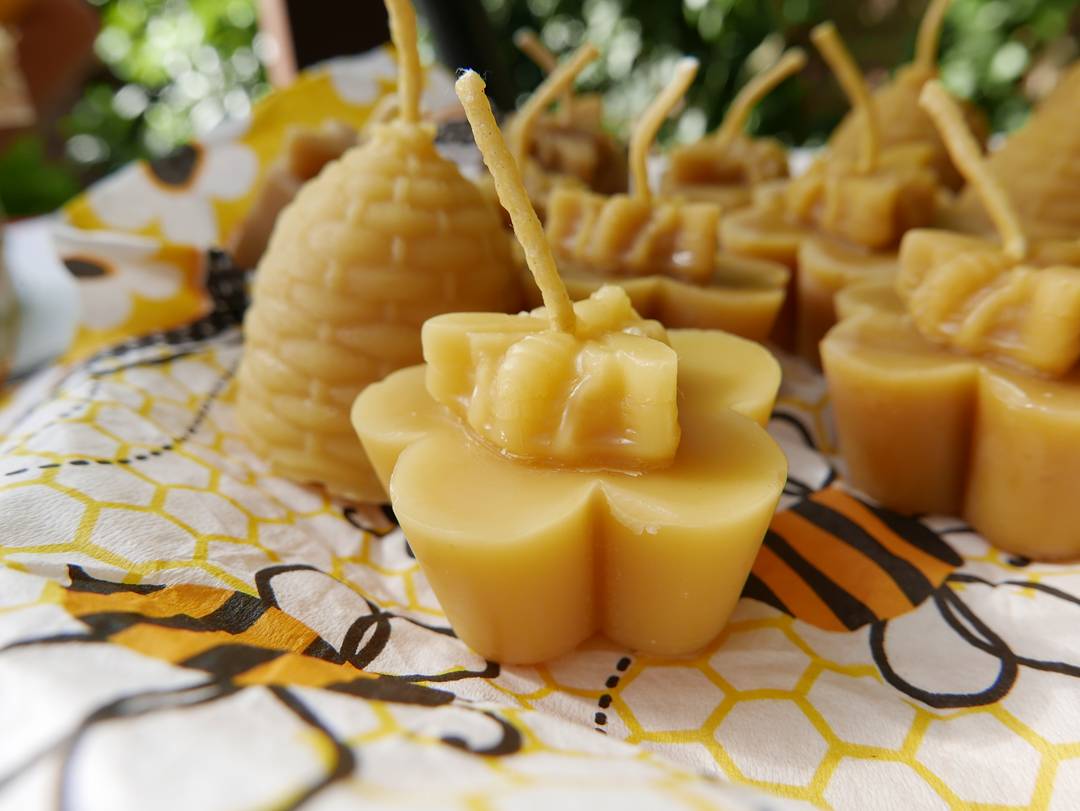
7. Make a honeycomb model
Honeycomb is formed by interconnecting hexagonal cells of bees wax. The cells are hexagonal because it is the strongest and most efficient shape to use to create an interconnecting honey comb that doesn’t waste space or have gaps. You can experiment with this by making your own cardboard tube honey comb. You just need a cardboard tube cut into small rings and a yellow background to stick or play with them on. Then play with bending and folding the tubes into different shapes and them placing them together so the sides touch to see which shapes are the most or least efficient to make structures with.
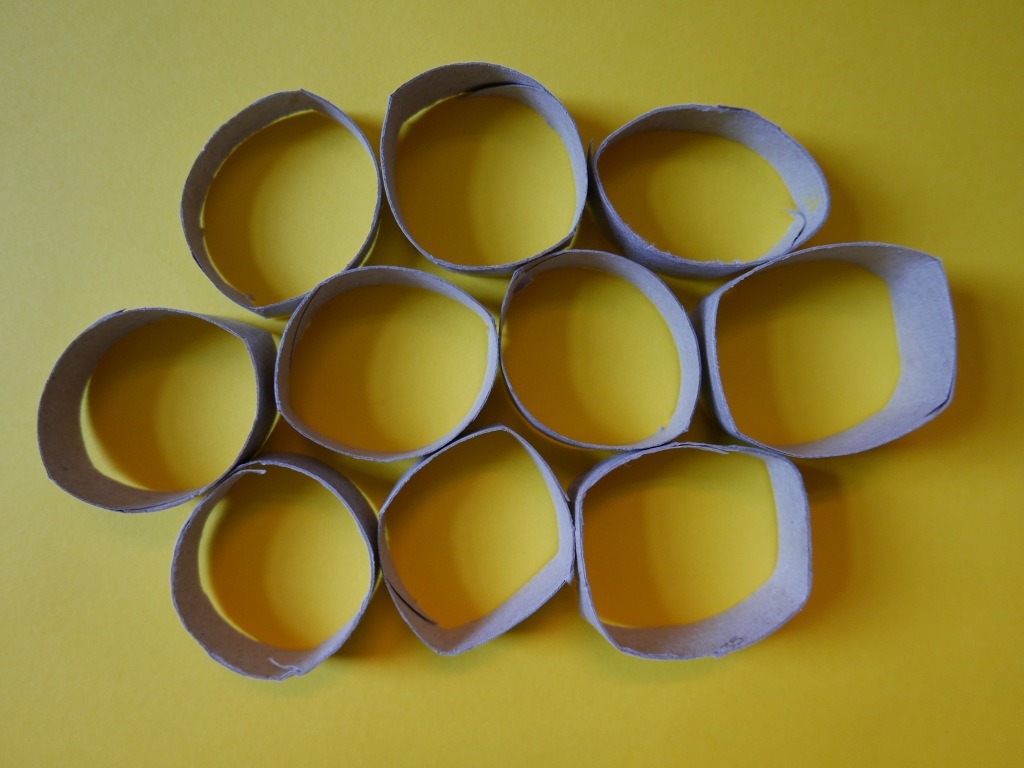
8. Make cardboard tube bees.
We hate to waste anything and recycling and reusing materials is one of many small things we can all do to help the environment. So instead of chucking used cardboard tubes we like to find ways to use them in crafts and activities. To make cardboard tube bees you just need an old cardboard tube and paint. Cut the cardboard tubes into three lengths. Then paint them yellow with stripes. Then stick, draw or paint on just some eyes and or legs and wings When the bees are dry you can use them as decorations, story props, napkin rings or even fill them with sweets or presents to give as gifts.

9. Make egg carton bees.
You can also make some cute bees using old egg cartons. To make egg carton bees simply cut out the spikey centre parts of the egg cartons and paint them yellow. Then stick, draw or paint on the eyes, wings and markings. When the bees dry you can also use them for role play, decorations or story props.

10. Painted pebbles bees
We love finding painted pebbles and stones when we are out and about, it’s wonderful to see the creativity and love that people put into them. You can easily find pebbles to decorate yourself by looking in your garden, on a nature walk or along the shore. All you need then is some paint or permanent markers to paint or draw colourful designs onto the pebbles or turn them into animals like bees or food like strawberries.
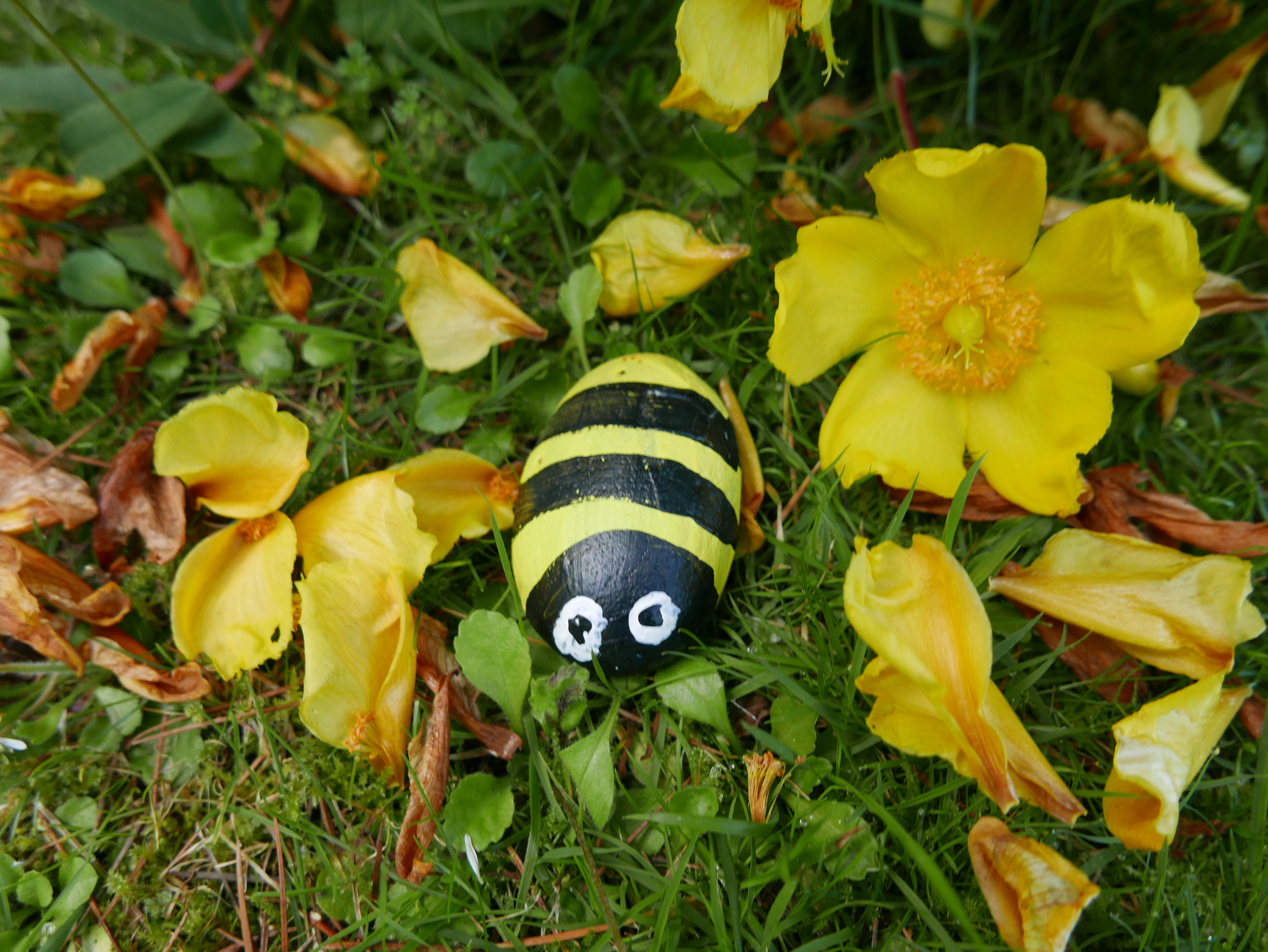
Once you have finished painting your pebbles you could use them in pretend play, as games counters or hide them in your garden and have a treasure hunt. You could even join a local rock finding group where you show pictures of the rocks you have made and invite people to find them in a local park or a safe, easy to access place. Who knows how far your rocks may travel and the adventures they might have may have along the way. *Safety note please be aware of the choking hazard of pebbles with smaller children.
11. Honey bee sequencing game
You could use your bee pebbles to play a simple sequencing game where you use a set of simple visual instructions like arrows to move a bee from its hive to a flower. This can also be used as a simple way to explain basic computer coding to older children as well as demonstrating how robots function using pre- programmed instructions.
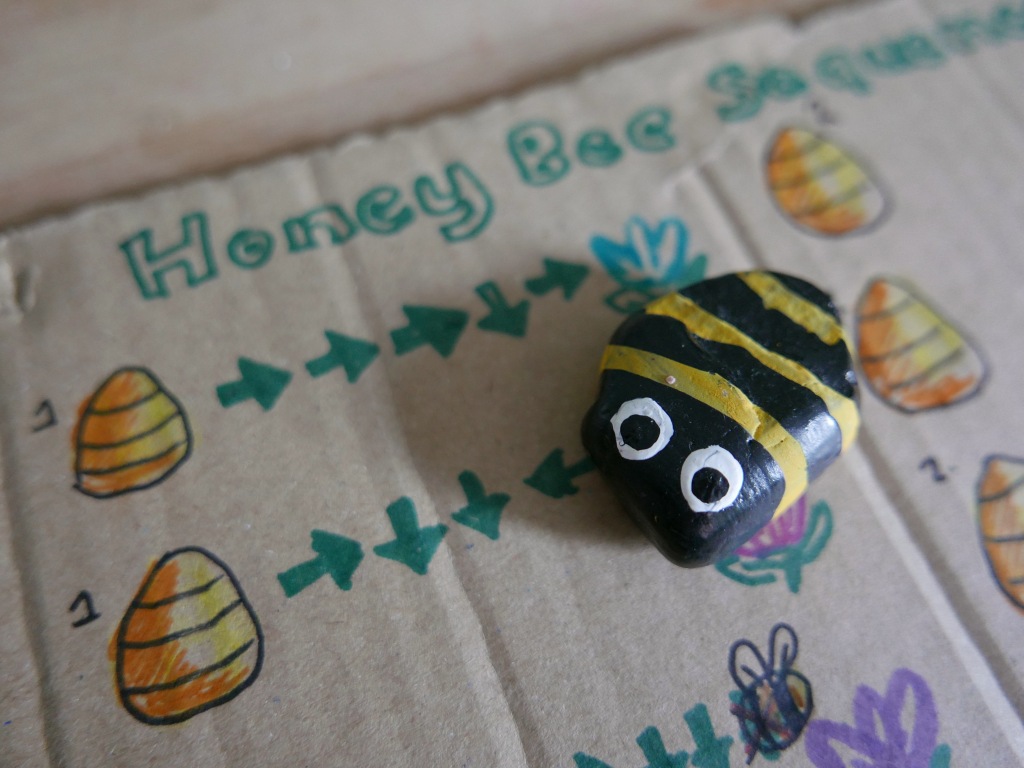
All you need for this game is a recycled piece of cardboard, pens and a bee pebble counter to play with. First you need to draw a simple 6×6 grid on one half of the cardboard. On the grid you will also need to draw two beehives as different starting points, a random selection of different coloured flowers as end points and some spider webs as obstacles to avoid.
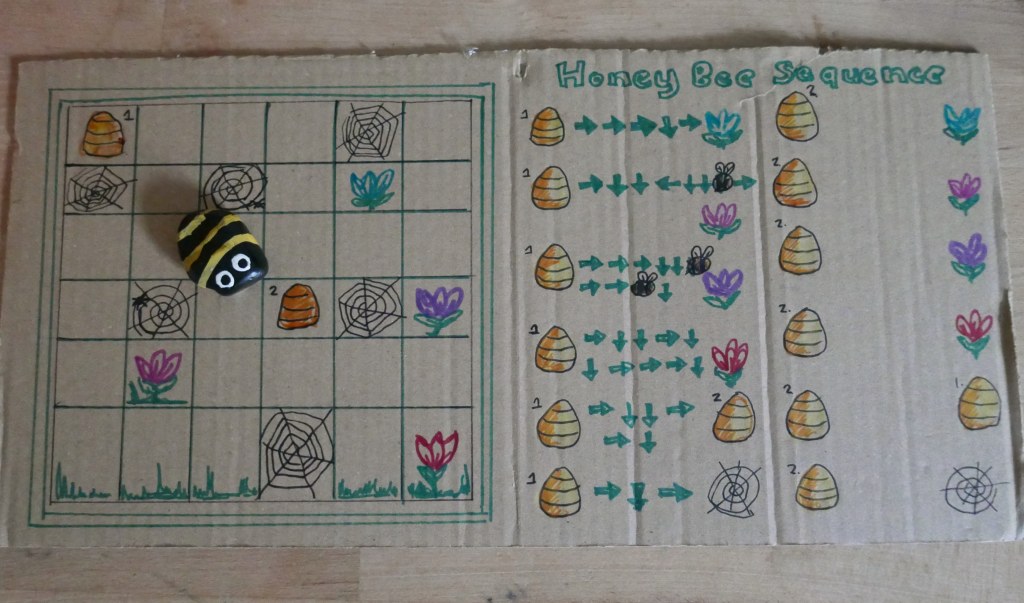
On the second half of the cardboard you will need to draw some simple sets of instructions using arrows as direction indicators to show the children where to move the bee to. The idea is to move the bee counter from the starting bee hive to a specified flower, avoiding spider webs along the way. Older children can also have a go at to write their own programming instructions using simple arrows that direct the bee from a hive to a flower, again avoiding the spider webs along the way.
12. Bee nature art frames
Nature art frames are really simple to make, fun to play with and create some wonderful images. You just need an old piece of cardboard a pen and some scissors. We hate to waste anything and recycling and reusing materials is one of many small things we can all do to help the environment. So instead of chucking used cardboard boxes we like to find ways to use them in crafts and activities.
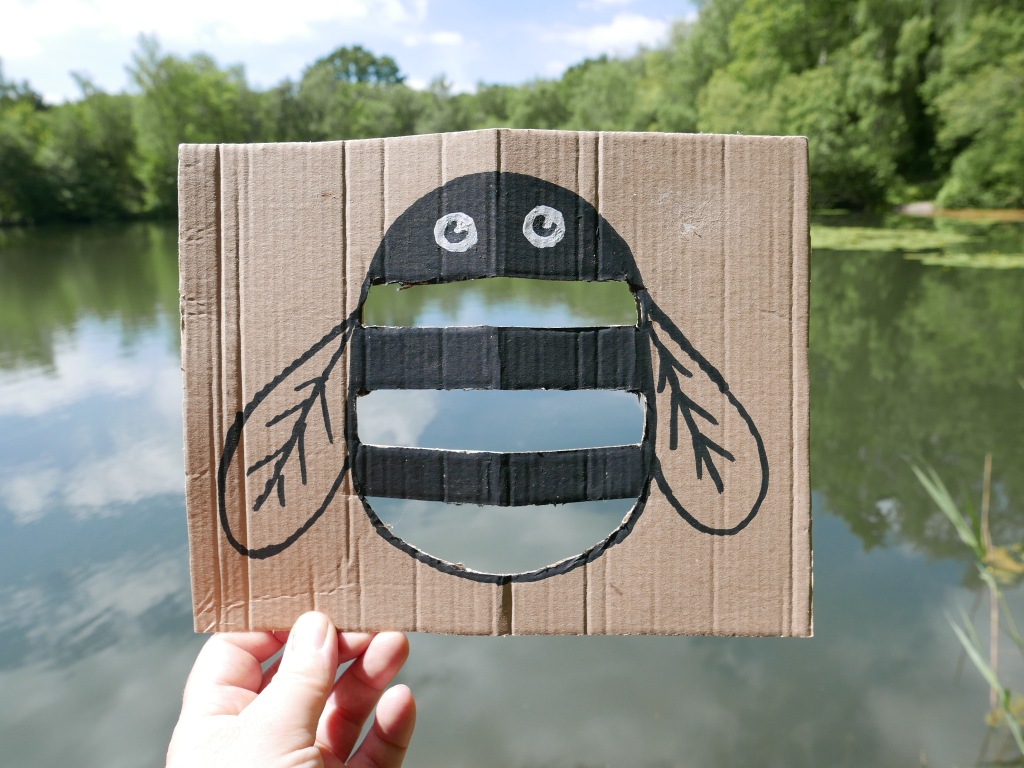
All you need to make a nature frame is to draw a simple shape or picture like a bee onto cardboard. Your shape or picture should have at least 1- 2 easy to cut out sections that you can then look through. When you have cut out the see through sections of your frames, you can take them outside to hold them up against any of the interesting natural objects, textures, patterns and shapes you can see, like the sky, trees, flowers and grass for example.
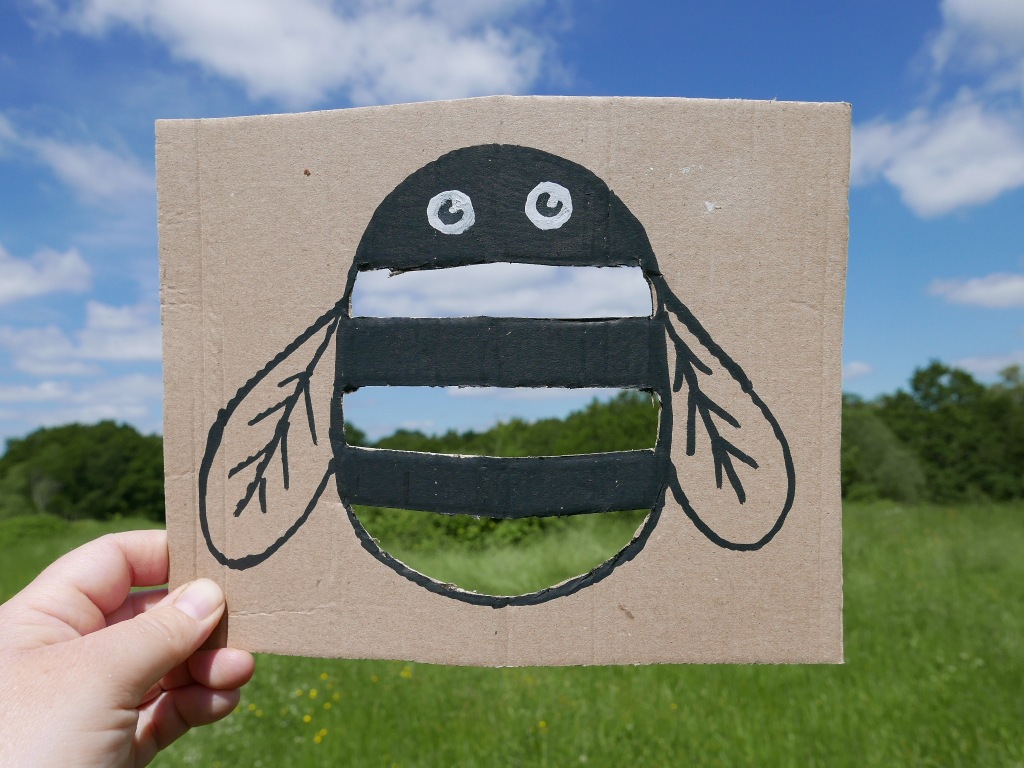
The picture you see or create with the frames changes as you move the paper around. It s fun to see all the beautiful patterns, shapes and colours of nature bring your pictures to life. You could even take photos of the nature frames as you go to capture the artwork and pictures they create.
13. Bee nature weaving board
A piece of recycled cardboard also makes a great base for a threading and weaving nature hunt board. All you need to do is ask the children to draw or paint simple bee picture onto the cardboard. (Or you could do it for them if they are too little). Then carefully poke a pencil through the cardboard at different points to make holes for the children to poke, thread and weave found natural materials through. You could use leaves, long grass, plant stems, bark, fallen fruit, nuts, seeds and flowers*. *Pretty please don’t pick any wild flowers, only collect ones you have grown yourself (we grow our own buttercups and dandelions) or fallen ones you find on the floor.

14. Mirror print bees
A quick activity that’s also looks really effective. Simply fold a piece of paper or recycled cardboard in half. Unfold the paper or card and then paint half the shape of a bee onto one side of the paper. Then fold the paper or card back up again and press down firmly across the whole of the surface. When you open the paper or card back up again you should have created a lovely mirror image print of the bee.

15. Bee finger prints
You can easily make finger print bees and flowers by dipping your fingers in paint and printing onto a surface. You can then use, paint, pens or collaged materials to add details to your finger prints bees and flowers.
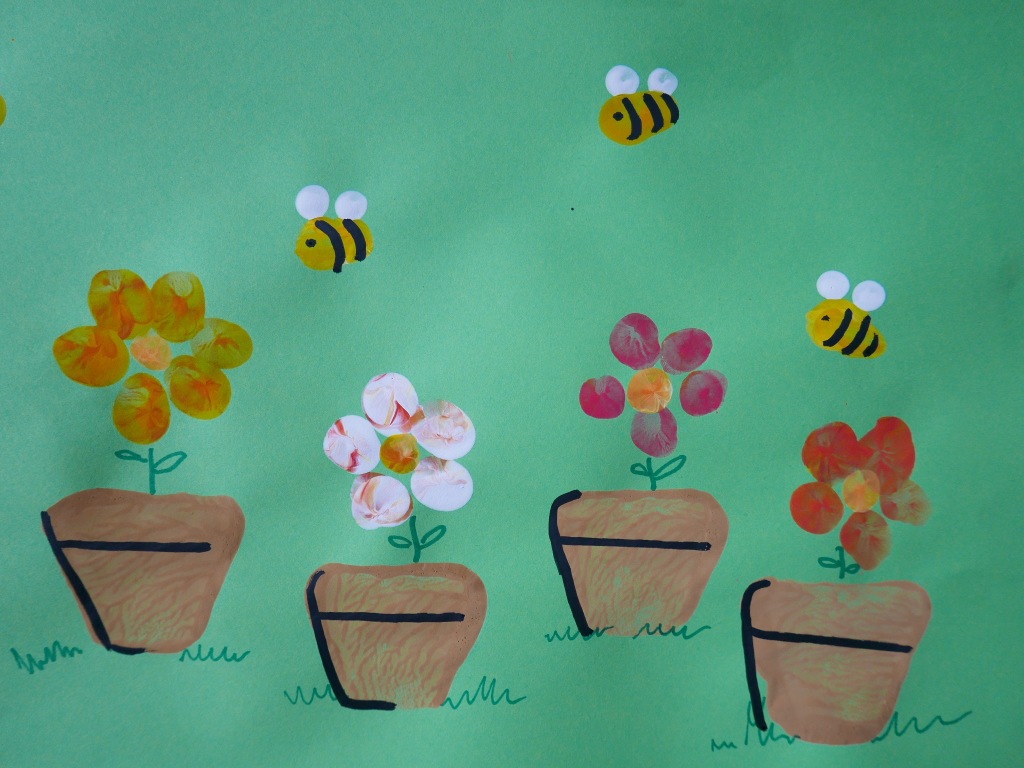
16. Bee potato prints
Potato printing is a simple activity for children of ages, all you need is a potato cut in half, a bit of inspiration and some paint to get started. How about using the potato prints to make patterns, pictures, cards and even recyclable wrapping paper. It is also fun to experiment printing on different types of surfaces and textures from paper to fabric, foil and wood. And as long as you use non toxic paint you can even print on outdoor surfaces like paths, trees and leaves.

You can easily make a simple bee potato print by dipping a potato half in yellow paint and then printing it onto a surface. When the paint dries you can then easily paint or stick on the bee eyes, legs, wings and markings.

Or how about cutting half a potato into a hexagonal shape that you can then use to print a bee honeycomb shape, pattern or picture. Potato’s are a great environmentally friendly material to use as stamps for printing. You can compost them after use or even grow them into potato plants. Simply wash any paint off the potato halves and leave them to dry for a few days. Then plant them in damp soil or compost. If you are lucky like we were your potato’s may start to grow into little potato plants.

17. Bee nature collages
Making nature collages is a fun activity for children of all ages and abilities. It encourages creativity and helps develop fine motor skills. All you need is some paper or recycled cardboard, Firstly you need to draw or paint simple bee pictures onto the paper or cardboard. Next collect as many natural objects as you can find around you for your collage. You could use leaves, stones, grass, bark, fallen fruit and flowers. *But pretty please don’t pick any wild flowers, only collect ones you have grown yourself or fallen ones you find on the floor.

Arrange the materials on top of your picture in any way you like. You could make a frame or a pattern on top of the picture or you could create a mini jungle or garden for the beetles to live in. Its fun to explore the textures, shapes and colours of the materials you are using. It’s a good way to introduce children to new words and concepts and a perfect opportunity to talk about why natural things are different colours. For example flowers are brightly coloured to attract pollinators like bees and butterflies, grass and leaves are green because of the chlorophyll in the cells which is busy turning sunlight into food.
18. Bee painted log slices
Painted log slices are great fun to use in pretend play you could easily paint them to look like animals, people or food. It is easy to turn them into bees using a bit of yellow, black and white paint. Once you have finished painting your log slices the children can have fun using them in pretend play or as story prompts or props. You could even hide them and have a treasure hunt or recreate childhood games by turning them into counters for games like noughts and crosses, snakes and ladders or even checkers.

19. Pine cone bees
You can also make some cute bees using pine cones wrapped with yellow wool, string, ribbon or scrap fabric of tissue paper. Simply wind the material round the pine cone to form your bees stripes and then stick on some eyes and wings. You could also use bended branches of hazel or willow to form the wings.
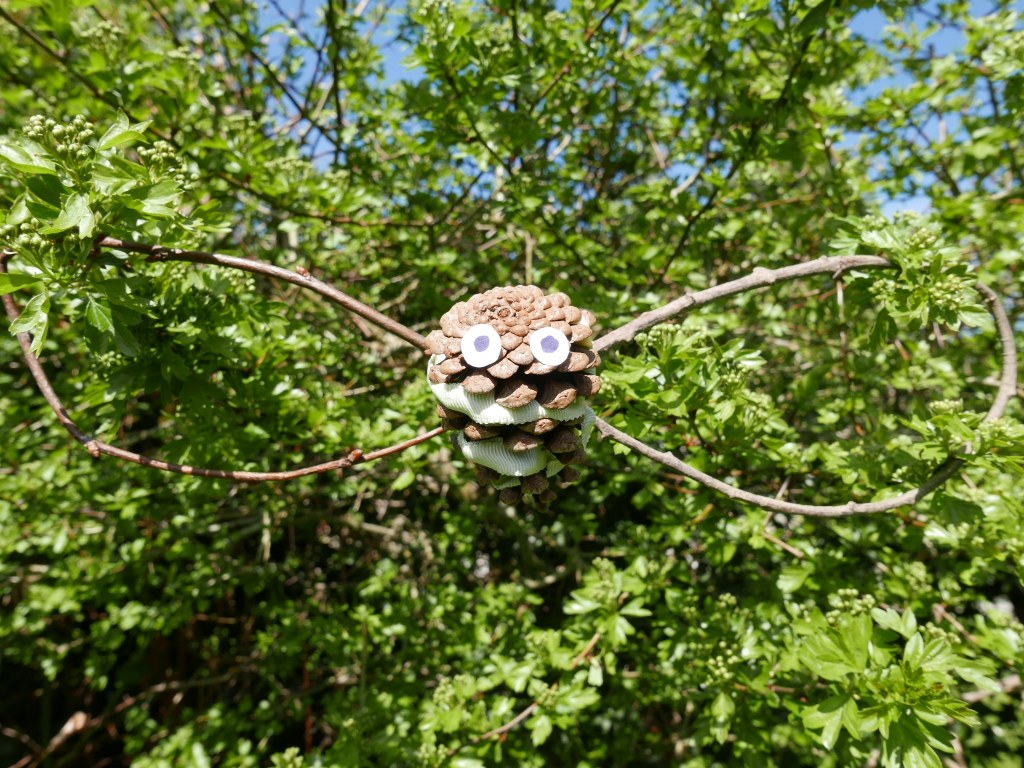
20. Wrapped rock bees
Alternatively you could create bees using rocks wrapped with yellow and black wool, string, ribbon or scrap fabric of tissue paper. Simply wind the yellow and black materials round the rocks to form the bees stripes and then stick on some additional eyes and wings using paper, card or farbic.

21. Grow wildflowers and pollinator friendly plants
It is important to help pollinators like bees, butterflies, moths, hover flies and beetles by providing food and egg laying spaces for them. You can easily do this by growing as many wildflowers and pollinator friendly plants and flowers as you can, thereby provide a source of food for all year round as well as giving them the plants they need to lay their eggs on. The Friends of the Earth have a great guide to bee friendly plants you can grow throughout the year here.

22. Make wildflower seed bombs
One of the ways to spread and grow wildflowers in urban areas is by scattering seed bombs. Seed bombs are little clay balls filled with soil and seeds. The clay protects the seeds from being eaten by wildlife until they are ready to grow and the soil provides nutrients to help them grow. Sunshine and rain will do the rest and the clay will naturally biodegrade back into the soil afterwards.
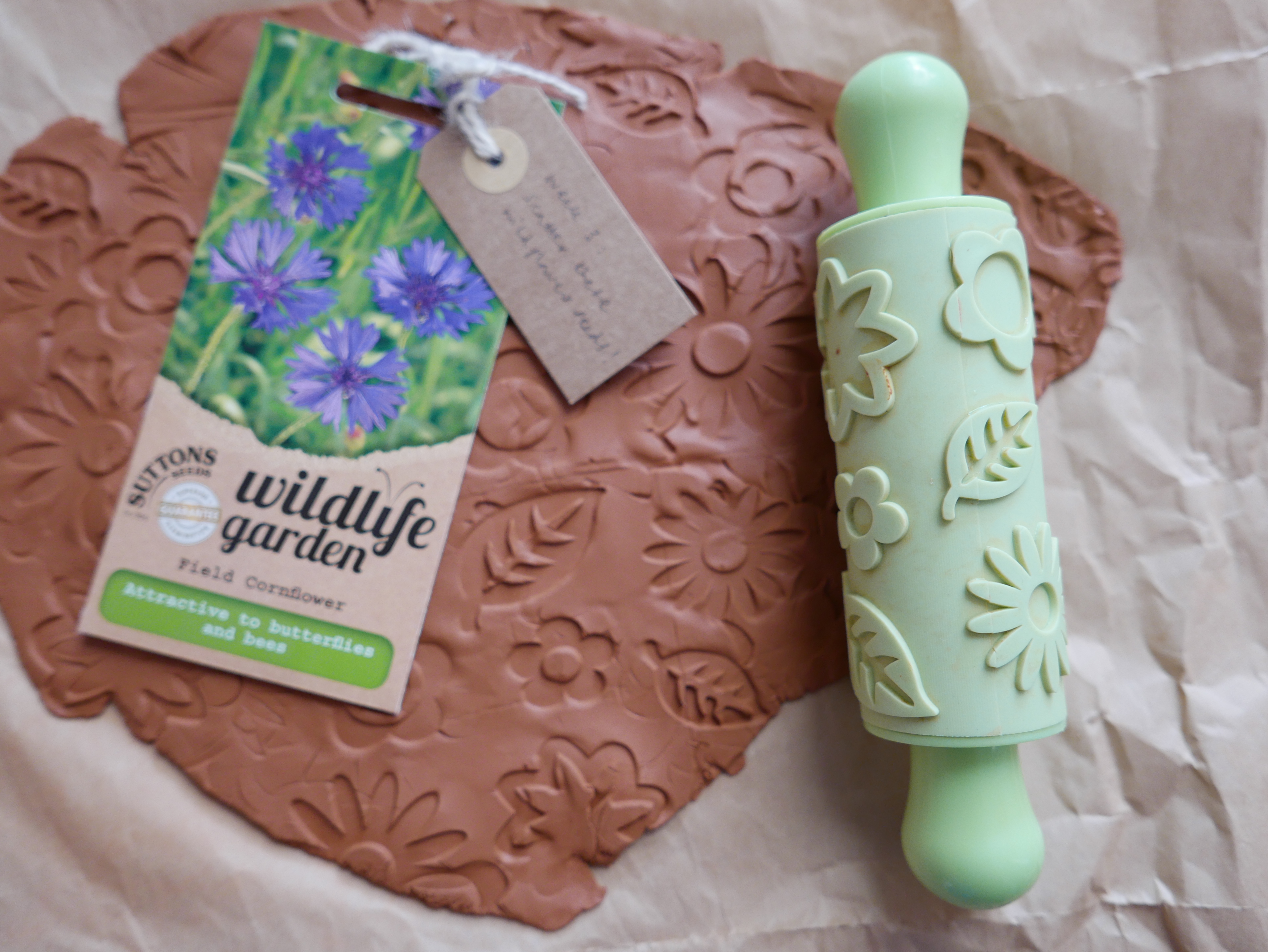
To make seed bombs all you need is some natural clay, wildflower seeds and soil. Simply roll the clay out onto a sheet of recycled cardboard or paper. Then scatter a fine layer of soil and wildflower seeds onto the top of the clay. Roll the clay up (with the soil and seeds in the centre) and then pinch off small pieces off the roll to gently shape into little balls. When you have turned the whole of the roll into seed bomb balls place them in a safe place to dry out fully.

When the wildflower seed bombs are dry you can take them out on walks to scatter to grow. Just make sure you scatter them responsibly in suitable areas. Please don’t ever scatter wildflower seeds in nature reserves (there may be a delicate balance of plants already) or on private property without permission from the owners.
23. Let the weeds grow wild
It’s a shame that so many important native wildflowers and plants are considered unwanted “weeds” that are often pulled up or killed off by chemicals. For example dandelions are beautiful wildflowers that provide an important source of food for pollinators. They flower early in the year long before any other plants. Bees, butterflies, and many other insects feed on the pollen and nectar, and caterpillars of butterflies and moths feed on the plants. Some species of bird even feed on the seeds. The entire plant is also edible for humans, you can eat the leaves, stems, flowers, and roots of dandelions.

Stinging nettles also provide an important source of food for wildlife. The caterpillars of several species of butterfly and moth rely on the plants for food, ladybirds lay their eggs on the leaves, bees and other pollinators feed on the nectar from the flowers and some species of bird even feed on the seeds. Humans throughout history have also relied on nettles for food, clothing, dye and rope. Ivy is also a vital source of food late in the year for pollinators Try not to cut back Ivy in late summer and autumn as this is when it ivy plants start flowering.
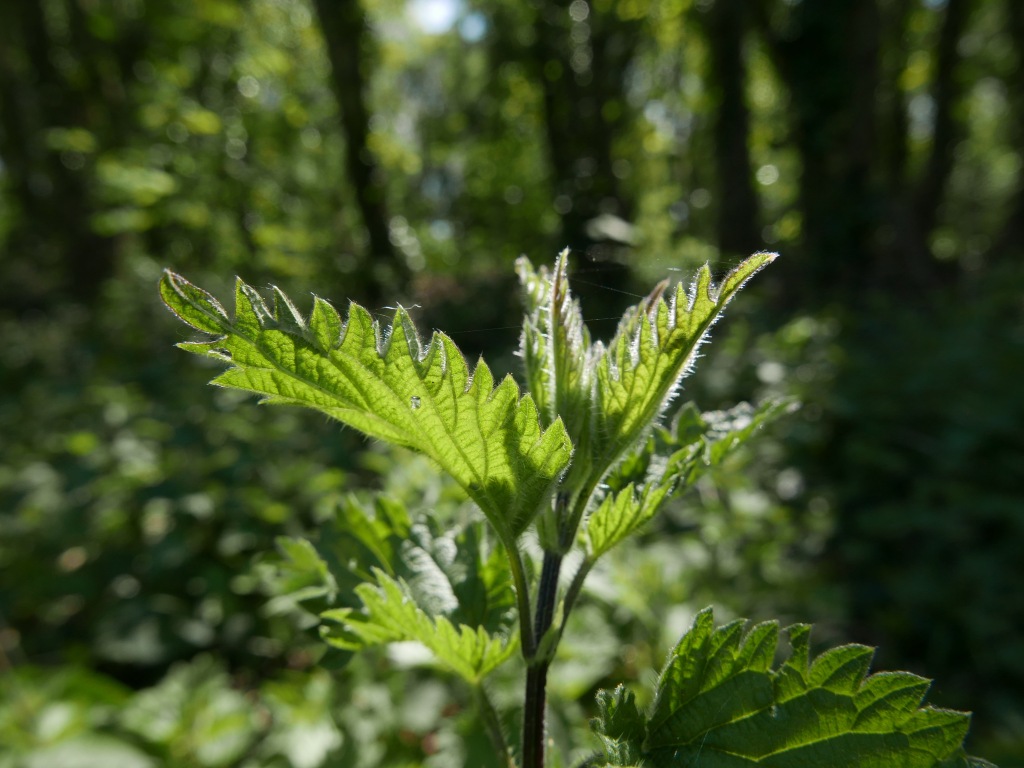
24. Go of a bee Safari
How about going on a bee safari or minibeast hunt in a garden, park or natural areas to see how many fascinating insects like bees you can find? The Bumble Bee Conservation Trust have a brilliant visual guide to identifying bees here to help you identify any you find. You can also help citizen science by recording your bee and insect findings on the I spot nature site.
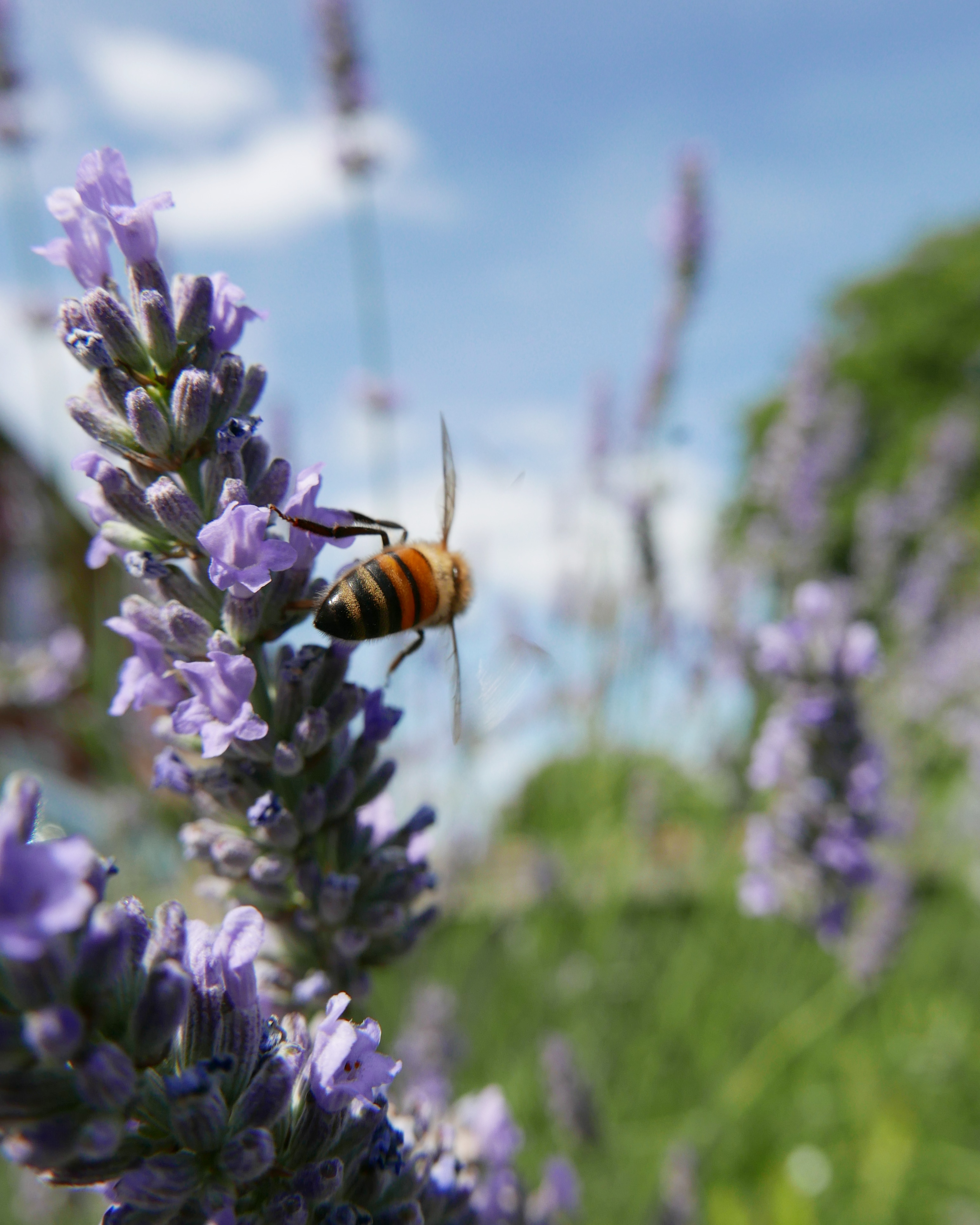
25. Make a water station for bees and insects
On hot days bees and other pollinating insects can become overheated and dehydrated. You can give them a helping hand by providing a water station. All you need for this is a shallow dish or tub lined with pebbles to give the bees something to stand on (so they don’t drown) and enough water to fill the base of the dish/tub without covering the pebbles.

It’s important not to put sugar solution in the water station as this can spread disease and also prevent bees from properly gathering nectar. Please also make sure the pot and water cleaned out every few days to prevent it becoming contaminated.
If you like this you might like to try:
25 Moth activity ideas + fun facts

16 Beetle activity ideas + fun facts

36 Bird activity ideas + fun facts

22 Butterfly and caterpillar activities + fun facts
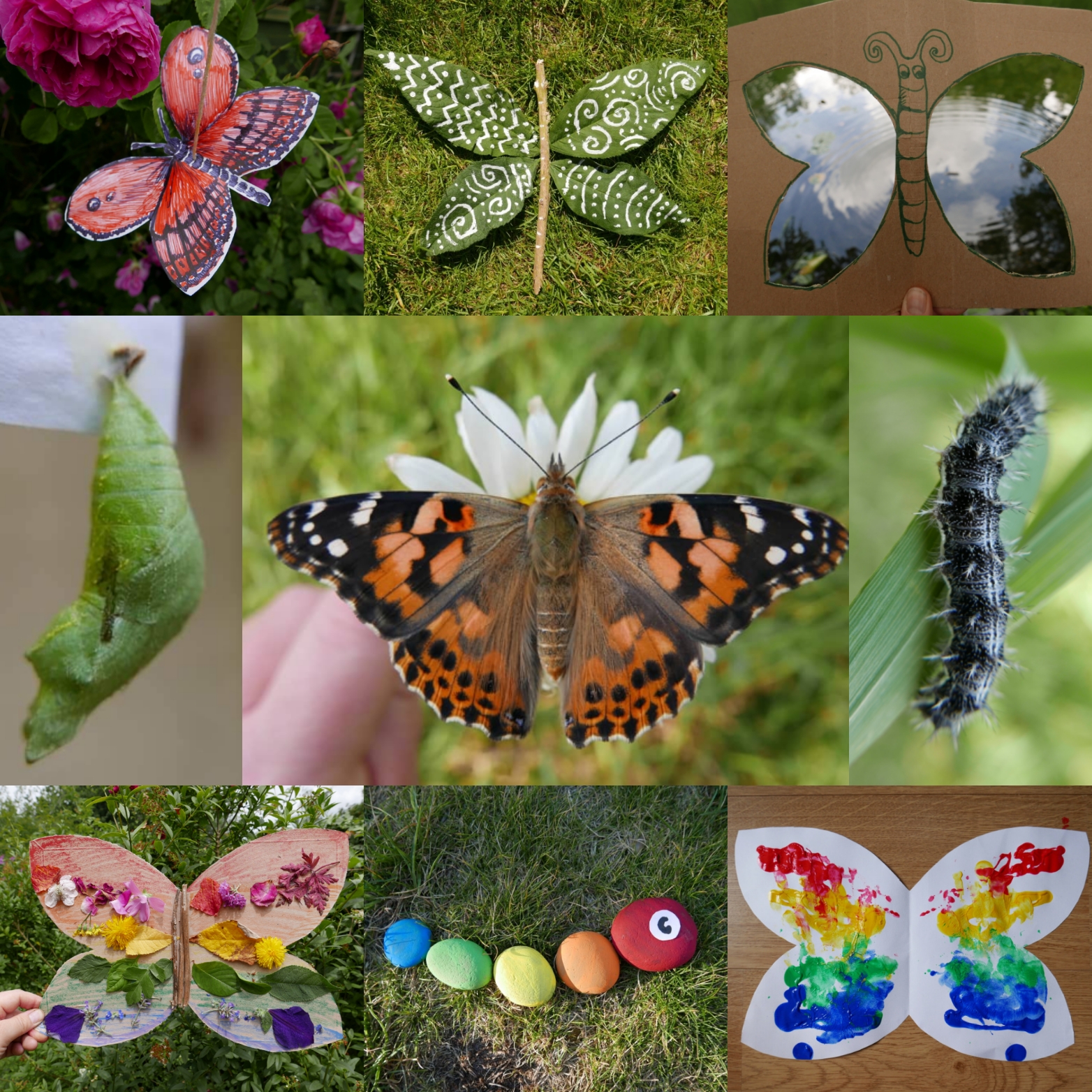

One thought on “25 World Bee day activity ideas”